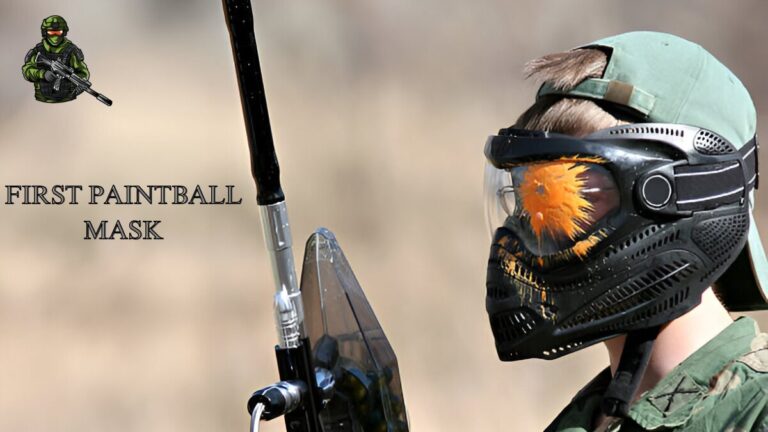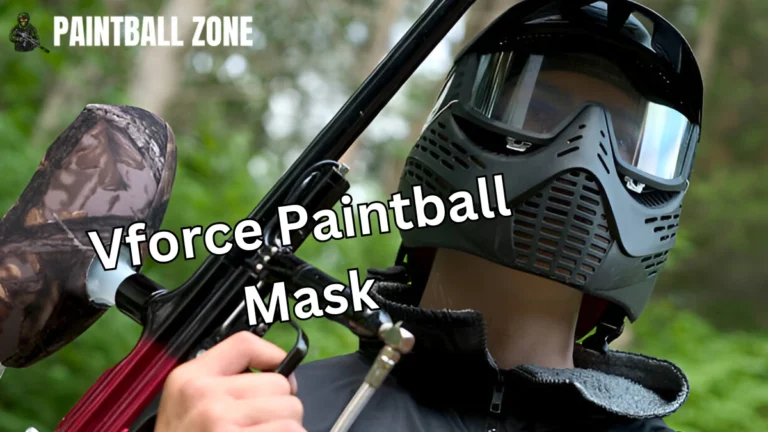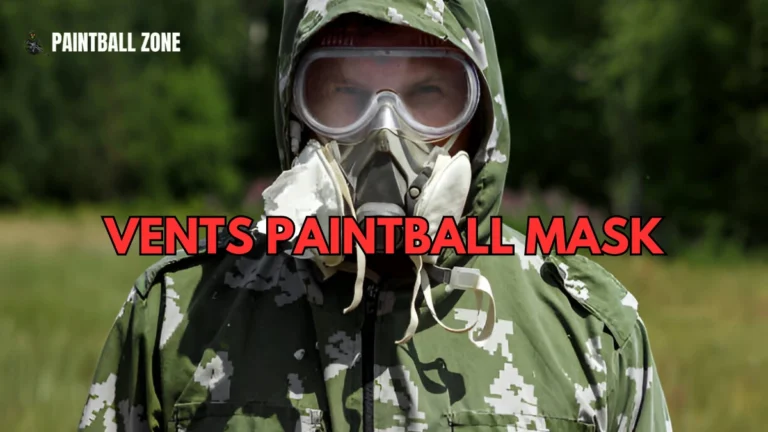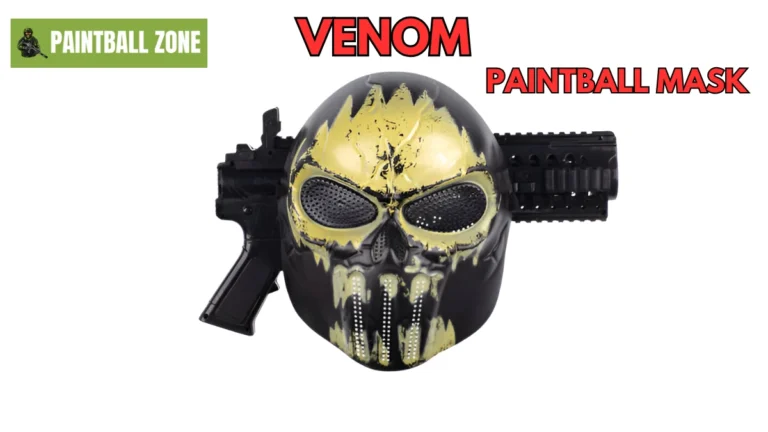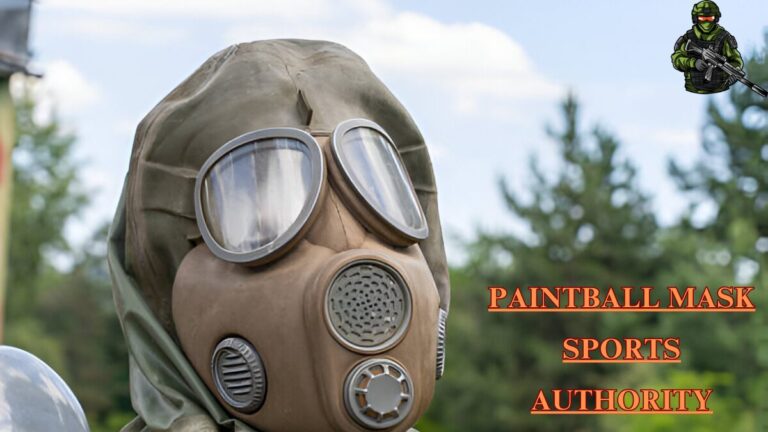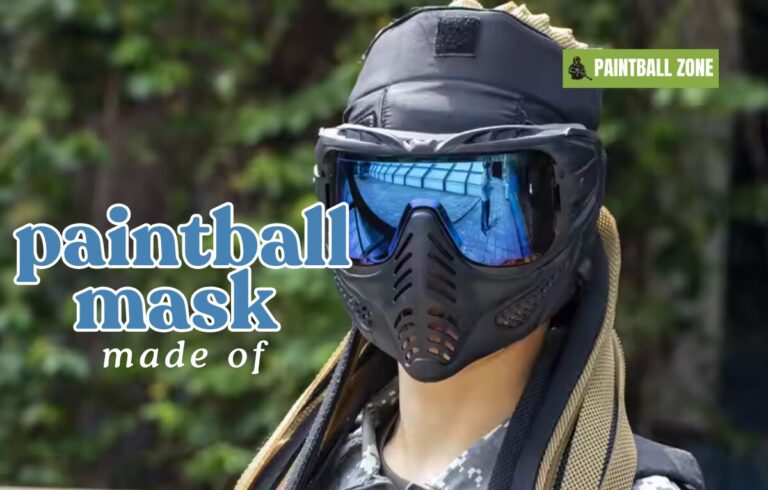How to Paint Your Paintball Mask
Customizing your paintball mask can be a fun and rewarding way to express your personality and stand out on the field. In this How to Paint Your Paintball Mask comprehensive guide, we will take you through every step of the process—from selecting the right materials to applying the perfect paint job. By the end of this article, you’ll have all the knowledge you need to paint your paintball mask like a pro. Let’s get started!
Why Paint Your Paintball Mask?
Personalization
One of the primary reasons to paint your paintball mask is to make it unique to you. In a sport where players are often hidden behind their gear, a custom-painted mask can be an effective way to stand out. Whether you’re designing a sleek, minimalist look or going all out with intricate designs, the customization possibilities are endless. Personalizing your mask not only makes it your own but also boosts your confidence during play.
Durability
A painted mask is not just about looks; it also provides an extra layer of protection. By painting the mask with the right materials, you can add a layer of defense against the constant wear and tear that comes with paintball matches. The paint can help prevent scratches, fading, and other damage to the surface of your mask, prolonging its life.
Aesthetic Appeal
A custom paint job can make your mask stand out in a crowd. Whether you’re part of a team and want to create a unified look or just want to express your personal style, painting your mask can be a fun way to improve its aesthetics. It’s also a great conversation starter on the field!
Materials and Tools You’ll Need for How to Paint Your Paintball Mask
Paint Selection
Choosing the right paint is crucial to the success of your custom paint job. You’ll need paint that’s specifically designed for plastics to ensure the best results. Here are a few paint options to consider:
- Krylon Fusion: Known for its superior adhesion to plastic surfaces, this paint is a top choice for many paintball players. It’s available in a wide variety of colors and finishes.
- Rust-Oleum: Another great option for plastic surfaces, Rust-Oleum offers both spray paints and brush-on paints in various finishes, including matte and gloss.
- Acrylic Paint: If you prefer to hand-paint your mask, acrylic paints are an excellent choice. They are easy to work with and can be sealed with a clear coat for durability.
Preparation Tools
Before you start painting, gather the following tools to ensure a smooth process:
- Masking Tape: Essential for protecting areas you don’t want to paint, such as the lens or padding.
- Plastic Primer: A primer designed for plastic helps the paint adhere better to the mask surface.
- Clear Coat: To finish your paint job, a clear coat is necessary to protect the paint and give it a polished look.
- Sandpaper or Sanding Block: Lightly sanding the surface of the mask ensures the paint sticks better.
- Drop Cloth or Newspaper: Protect your work area from any overspray.
- Safety Gear: Gloves, a mask, and a respirator are crucial when working with spray paint to protect yourself from fumes.
Brushes and Stencils
For those who want to get more creative with their designs, having a set of fine brushes and stencils can help. Stencils are great for creating clean lines and consistent patterns, while brushes can help you add detailed artwork to your mask.
Preparing Your Paintball Mask: How to Paint Your Paintball Mask
Step 1: Cleaning Your Mask
Before you start painting, it’s essential to clean your mask thoroughly. Any dirt, oils, or residues left on the surface will interfere with the paint’s adhesion. Follow these steps:
- Wash the mask with warm, soapy water to remove any grime.
- Dry it completely with a clean towel or cloth.
- If necessary, use a microfiber cloth to wipe down the surface and ensure it’s free from dust.
Step 2: Disassembling the Mask
If your paintball mask has removable parts like the lens or padding, it’s a good idea to take them off before painting. This will help prevent overspray from getting on these parts and protect them from potential damage.
Step 3: Sanding the Surface
To help the paint adhere better, lightly sand the surface of your mask. This will give the paint something to grip onto, ensuring a smooth and durable finish. Use fine-grit sandpaper to gently scuff the surface. Be careful not to sand too aggressively, as you don’t want to damage the mask.
The Painting Process: How to Paint Your Paintball Mask Like a Pro
Step 1: Applying Primer
Before you start applying color, it’s important to use a plastic primer. The primer creates a better surface for the paint to adhere to, improving the overall durability of the paint job. Here’s how to apply it:
- Shake the primer can thoroughly.
- Hold the can about 8–10 inches from the surface.
- Apply a light, even coat to the mask, making sure not to oversaturate any areas.
- Allow the primer to dry completely before moving on to the next step.
Step 2: Applying the Paint
Now it’s time to start painting your mask! Whether you’re using spray paint or acrylics, make sure to apply the paint in thin, even layers. Here’s the process:
- Shake the paint can well before using it.
- Hold the can about 8–10 inches from the surface.
- Spray in light, even coats, allowing each layer to dry before applying the next.
- If you’re using acrylic paint and brushes, use fine brushes to add details and ensure clean lines.
Step 3: Adding Custom Designs
If you want to add more intricate designs or patterns to your mask, now is the time. Use stencils to create sharp, clean edges or freehand paint for a more artistic look. Be sure to let each layer of paint dry before moving on to the next.
Sealing the Paint Job: How to Paint Your Paintball Mask for Longevity
Step 1: Applying Clear Coat
Once your paint has dried, it’s essential to apply a clear coat to protect the finish. This step will help preserve your custom design and prevent it from chipping or fading over time. Use a clear acrylic spray coat and follow these steps:
- Shake the clear coat can thoroughly.
- Apply an even, light layer over the entire mask.
- Allow the clear coat to dry completely before handling the mask.
Step 2: Drying and Curing
After applying the clear coat, let the mask sit in a well-ventilated area for 24-48 hours. This ensures that the paint and clear coat have fully cured, giving your mask the durability it needs to withstand paintball matches.
How to Paint Your Paintball Mask : Maintenance and Care
Cleaning
To maintain your painted mask, clean it gently with a microfiber cloth. Avoid harsh chemicals that could damage the paint. Always make sure to dry it thoroughly after cleaning to prevent any moisture from affecting the paint job.
Storage
When you’re not using your mask, store it in a cool, dry place. Avoid exposing it to direct sunlight for long periods, as UV rays can cause the paint to fade.
Touch-Ups
Over time, your mask may get scratched or worn down. If this happens, don’t worry! You can always do a quick touch-up by applying a new layer of paint or clear coat.
How to Paint Your Paintball Mask: Troubleshooting Common Issues
Peeling Paint
If your paint starts to peel or chip, it could be due to improper preparation or insufficient curing time. Make sure to follow all the steps carefully and give the paint plenty of time to dry.
Bubbles in the Paint
Bubbles can form in the paint if you apply it too thickly or don’t allow enough drying time between layers. To fix this, sand the affected area and reapply a thin layer of paint.
Uneven Coating
Uneven paint can occur if the paint is applied too quickly or too heavily. Always apply thin, even layers, and allow each layer to dry before adding another.
How to Paint Your Paintball Mask:Conclusion
Painting your paintball mask is a rewarding process that not only gives your gear a unique look but also adds an extra layer of protection. By following the steps outlined in this guide, you’ll be able to create a custom-painted mask that reflects your style and stands up to the wear and tear of intense paintball matches. So, grab your paint and tools, and get started on your paintball mask transformation today!
How to Paint Your Paintball Mask FAQs
- Can I paint any paintball mask?
Yes, as long as the mask is made of plastic, you can paint it. However, make sure to choose the right paint and primer for plastic surfaces. - How long will my paint job last?
With proper care and maintenance, a painted mask can last for several months or even years. - Can I use spray paint for my mask?
Yes, spray paint is a great option for painting your mask, as long as it’s designed for plastic surfaces. - Do I need to disassemble my mask before painting?
It’s highly recommended to disassemble your mask to avoid getting paint on the lens or padding. - What type of paint should I use for the best results?
For the best results, use spray paints designed for plastic, such as Krylon Fusion or Rust-Oleum. - How long does it take for the paint to dry?
Each layer of paint typically takes 15-30 minutes to dry, but it’s best to wait 24-48 hours for the final coat to cure fully. - Can I paint the inside of my mask?
It’s not recommended to paint the inside of the mask, as the paint could interfere with your vision or comfort. - How can I prevent my paint from peeling?
Ensure proper surface preparation, apply thin coats of paint, and give each layer plenty of drying time. - Is painting my mask difficult?
Painting your mask is relatively easy if you follow the steps carefully. Just take your time and enjoy the process! - Can I add designs or artwork to my mask?
Yes, you can add custom designs, stencils, or artwork to your mask to make it unique and personalized.


